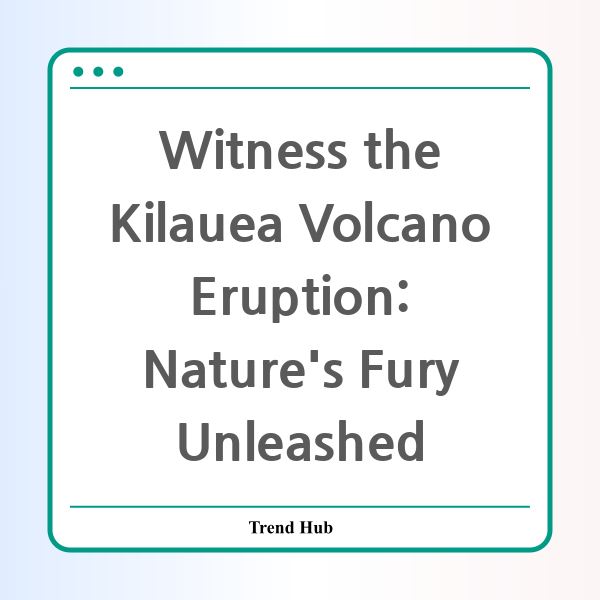* This website participates in the Amazon Affiliate Program and earns from qualifying purchases.

Are you ready to witness one of nature's most awe-inspiring spectacles? The Kilauea volcano on Hawaii's Big Island is once again erupting, captivating visitors and locals alike with its fiery display. Let's dive into the thrilling details of this volcanic event!
Kilauea, known as one of the most active volcanoes in the world, has shown increased activity since December. On December 23, the volcano began to erupt, and since then, it has entered multiple eruptive episodes. The latest episode resumed on Tuesday, February 7, at 10:16 AM, marking its ninth round of eruptive activity. Lava fountaining has been prominent within the north vent, reaching astonishing heights of about 330 feet (100 meters).
This ongoing spectacle is not just a geological event; it draws crowds eager to witness the raw power of Mother Nature. Hawaii Volcanoes National Park has become a prime viewing location, where visitors can safely observe the eruption from designated overlook sites. This recent increase in volcanic activity has sparked interest, drawing both tourists and scientists to Kilauea.
The eruption at Kilauea has not only been visually stunning but also has scientific implications. Understanding the patterns and impacts of the eruptions helps researchers study volcanic behavior and its potential effects on the environment. To date, the eruption episodes have varied significantly in duration, lasting from just a few hours to several days.
As lava flows onto the Halemaʻumaʻu crater floor, it creates a mesmerizing scene of glowing magma. With each episode, the park has experienced vibrant displays of power, and the glow from the lava can be seen clearly during nighttime. The Hawaiian Volcano Observatory provides updates, ensuring that the public remains informed about the ongoing volcanic activity.
There are, however, some hazards associated with the eruption. Volcanic gases and windblown volcanic glass, known as Pele's Hair, pose risks to visitors and nearby communities. While the lava flows are currently contained within the park, it’s important for visitors to heed safety guidelines and stay updated on the latest information about volcanic activity.
If you're contemplating a visit to see this natural wonder, here's what you need to know:
- Best Viewing Times: The evening and nighttime are optimal for witnessing the magnificent glow of lava.
- Safety First: Always follow park guidelines and be aware of your surroundings. Stay in designated viewing areas away from hazardous zones.
- Stay Updated: Check the latest eruption updates and safety information from the Hawaii Volcanoes National Park website or local news channels.
As Kilauea continues its spectacular eruptive display, it serves as a reminder of the earth's dynamic nature. Whether you’re planning a visit or watching from afar, the Kilauea volcano offers a thrilling glimpse into the forces that shape our planet.
What can we take away from this awe-inspiring event? The earth is alive, and its eruptions remind us of its power and unpredictability. Be sure to keep an eye on Kilauea's activity, and who knows, you might catch a glimpse of this volcano’s fiery dance!
* This website participates in the Amazon Affiliate Program and earns from qualifying purchases.